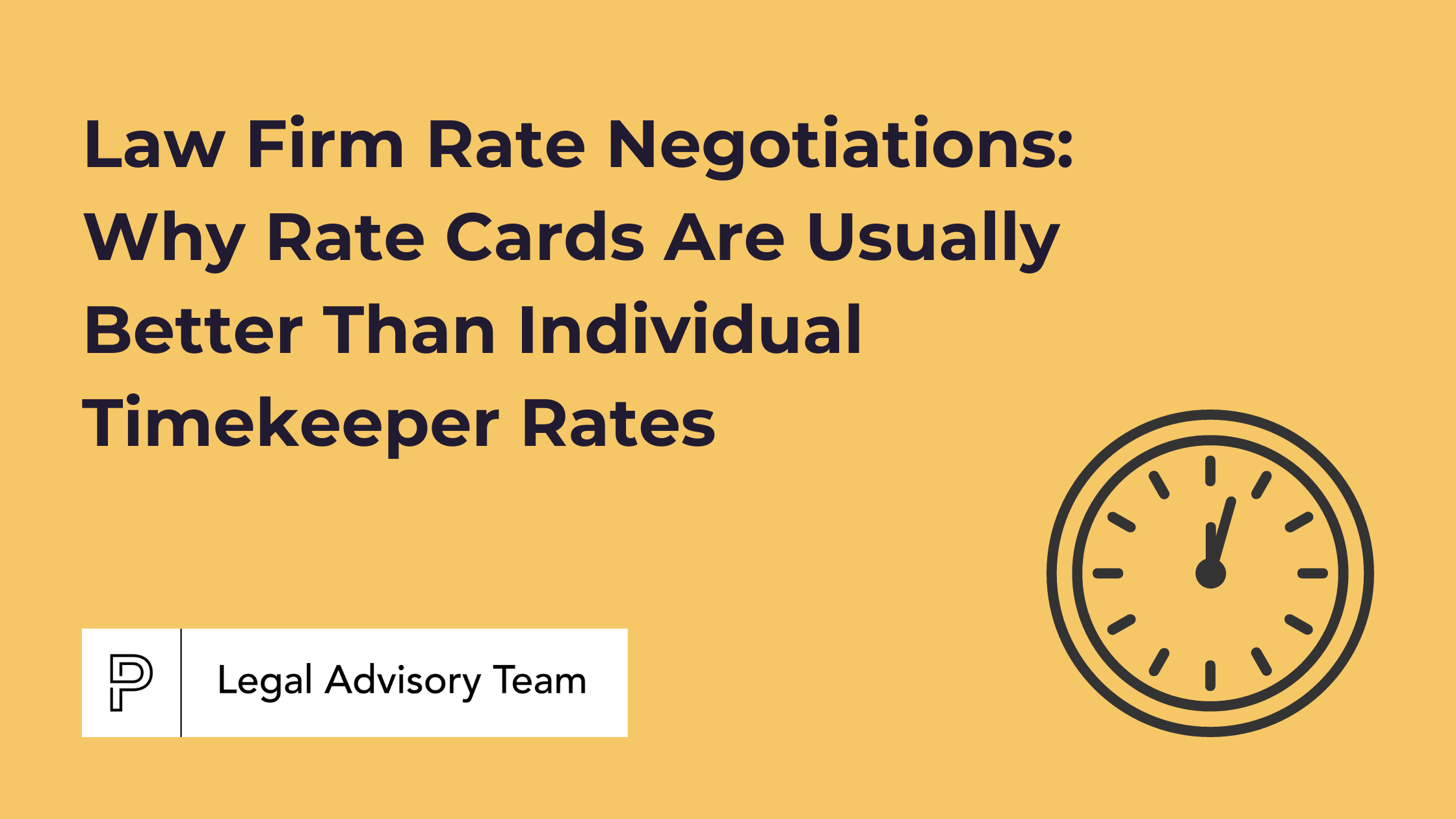
When it’s time to negotiate new rates with your law firms, the first decision is this: What are you negotiating? There are two common strategies:
- Individual rates
- Rate cards
In our work with some of the world’s largest in-house legal teams, we’ve seen the benefits and drawbacks of both of these approaches.
Here’s why we usually recommend negotiating a rate card rather than individual rates.
Note: Are rate negotiations taking too much time and energy? PERSUIT’s experts have written a guide to help: Battle of Rates, 7 Strategies to Survive the Annual Rate Negotiations Process.
The benefits of individual rates
Using individual rates means negotiating a unique rate for each timekeeper. For example, if you work with three timekeepers at a firm, you may decide to individually negotiate new rates for each of those three individuals every year.
Individual rates work well when you have a small number of timekeepers. But what if your team works with 200+ timekeepers from a single firm, a scenario common at large companies? And what if you have 50 firms to negotiate with to determine new rates by the end of this year?
The benefits of rate cards
When you have a large number of timekeepers or a large number of firms, we recommend leveraging rate cards rather than individual rates. The rate card approach empowers you to negotiate rates for timekeepers by staff level.
Rate cards are fully customizable to accommodate all billing practices. For example, your rate card might include a single rate for partners, associates, and paralegals or one for partners and another for all years of associate seniority.

Segmented rate cards
For even greater visibility into rates, you may decide to segment rate cards by practice group. For example, rates for employment law tend to be different than those of other areas, so you may segment your rate card and negotiate rates just for employment work.
Global rate cards are standard in USD, but you can use local rates where applicable. The card will have a separate, higher rate for partners working with the same practice group. Rate cards can be further segmented by practice area and location, depending on your situation.
Unicorns
When using rate cards, you may still have situations where an individual is unique — a “unicorn” as they’re often called. It’s okay to negotiate unique rates for unicorn timekeepers. But those are the exceptions.
Conclusion
Ultimately, the benefit of negotiating a rate card vs. individual rates is that you dramatically simplify the work needed to govern your relationship.
Rate cards allow for promotion and matriculation within the firm without having to renegotiate rates. For example, if an associate is added to the team mid-year, a rate card agreement allows the firm to simply add the new associate using the billing rates already in your e-billing system. You won’t have to circle back and negotiate new rates for those individuals, eliminating the need to hold or revalue invoices for months at a time.
Rate cards also make it much easier to compare one firm’s rates against other firms, giving you an idea of the overall market for legal services.
Note: For more information about improving the rate negotiation process with your firms, see PERSUIT’s guide: Battle of Rates, 7 Strategies to Survive the Annual Rate Negotiations Process.
